SOYL Newsletter March 2015
1. Use canopy models to apply nitrogen where it's needed
With April on the horizon, many growers are preparing for second applications on cereals and rape. For both crop types, SOYL is advising the use of canopy models to manage crop biomass.
The model used for winter wheat and winter barley creates a nitrogen recommendation by identifying target LAIs. This is chosen based on the current growth stage of the crop, so a winter wheat crop at growth stage 25, for example, will be allocated a target LAI of 0.91. This means that a crop that is on target will receive a planned dose and anything that is below target will receive an increased dose, with 30kg N used to grow one unit LAI. This will enable farmers to achieve the optimum canopy size at each growth stage to ensure targets yields are achieved.
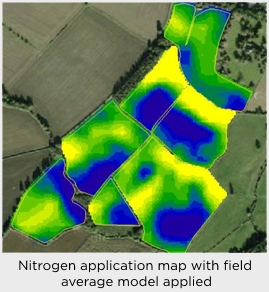
The management of winter OSR at this stage is slightly different. Unlike the cereal canopy model, which needs a planned dose to be entered, the winter OSR model recommends a nitrogen dose based on the LAI maps. The model works towards a target canopy of 3.5 LAI at flowering. A canopy smaller than this will suffer from yield penalties, but bigger than this will be subject to over shading and increased risk of disease and lodging. The model measures the growth needed to achieve this 3.5 LAI target and will apply 50kg N per unit LAI. Yield at this stage is not considered as this is a factor focused on the final application to avoid heavy dressings on the first main pass.
All figures listed above are based on HGCA research which aims to produce optimum canopy sizes and maximum yields. Growers can manage their own plans to suit current conditions using a number of edit tools available on the SOYLsense website. This is especially useful at this stage in zoning out areas that have suffered from pest damage to ensure efficient nitrogen usage.
Satellite images from the last few weeks are now available in all areas. If you haven't used variable rate nitrogen before, it's not too late; speak to us now for details. In 2014, yield benefits of over 3% were achieved in trials for the eighth year running.
If you have any questions about managing your SOYLsense applications, please call the SOYLsense team on 01635 204198.
2. Simplify variable rate applications with iSoyl
The success of iSOYL, the pioneering new app from SOYL launched five months ago, continues to exceed expectations both in the UK and abroad.
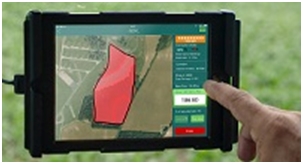
The app streamlines the variable rate application process for iPad users, saving growers time, money and effort. It uses a smart cable and adaptor to connect with all popular spreader, sprayer and drill controllers, and a data transfer system allows information to be effortlessly and efficiently transferred between field and office.
The clear, uncluttered layout makes it easy to find variable rate application files and maps, and the iPad touch-screen interaction allows the user to quickly control and edit them. Application rates can be amended on the go and user-defined points of interest can be recorded too. These might be weed populations or crop variation in fields and are recorded by simply dropping a pin on the relevant area. Because the system uses a GPS signal, it is easy to locate the exact location next time you return to the field.
SOYL customer Sandy Wade-Gery, based on the Bedfordshire/Cambridgeshire border, comments, “You’ve got inputs which cost literally tens of thousands of pounds and I think to quibble over an investment like iSOYL is very short sighted. The driver needs every aid he can get to ensure that his fertiliser is put on correctly, at the right rate and in the right part of the field, and iSOYL addresses all those issues and gives the operator a nice clear display. It’s simple, the men like it.”
iSOYL is compatible with iPad, iPad Mini and iPad Air. The one-off price of £495 includes a licence, supply of the smart cable and adaptors plus the in-cab mounting system. The app itself is free to download from the Apple App Store here. Learn more at www.isoyl.com.
3. Increase precision with electro conductivity scanning
The window for electro conductivity scanning is getting shorter as crops grow taller and travel becomes more difficult. The data collected can be used not only to inform variable rate seeding, but to manage variable depth cultivations too.
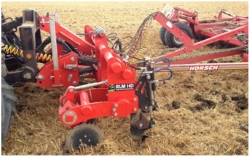
Electro conductivity scanning has become a widely accepted precision farming practice. By using a conductivity scanner towed in 24m swaths, different soil textures can be identified and mapped across the field. Many growers are successfully using these soil type maps to create variable seed rate maps and due to the three dimensional way the scanner operates, the benefits of conductivity scanning can also be applied to cultivations.
Cultivations are carried out to modify soil structure to enable good root growth and development. It also increases the volume of soil pores and improves soil water infiltration. However, cultivations which are carried out at the wrong time or too deeply can have a negative impact on the soil profile. Clay soils are more susceptible to compaction than sandy soils due to their fine soil particles and higher proportion of micro pores and using a cultivator to move wet, plastic clay soil only serves to create smearing and an impervious layer which blocks the natural capillary channels and hinders root development and nutrient uptake.
An electrical conductivity survey can help with cultivations by mapping the soil profile up to 1 metre deep. The survey takes into account the physical features such as soil texture, stone content and the soil bulk density.
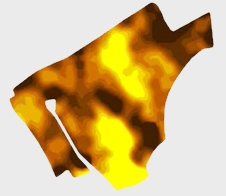
While the scanner is highly sensitive, it is not able to calculate the depth of compaction or predict an optimum cultivation depth. The most popular method of measuring the depth of soil compaction has been to use a soil penetrometer to vertically measure the depth, thickness and resistance of compacted soil. The main disadvantage of this approach is the need to measure numerous points. A practical alternative is a combined approach using the data from the conductivity survey to identify areas to target with the penetrometer. This approach is proving popular as it significantly reduces the time required to collect field information and also gives the grower a useful insight into the condition of the subsoil.
Collecting the data effectively is only part of the overall benefit. Cultivating using a cultivation plan can also bring significant benefits in terms of fuel efficiency and soil condition. In recent trials, a fuel reduction of 20% was recorded in different areas of the field when compared with the original set depth. To gain from these benefits in the field, a simple hydraulic control system called Autodepth needs to be installed on your cultivator. Autodepth responds to the cultivation plan by gradually altering the depth according to the soil conditions. This gradual depth change has the advantages of removing peak loads from the tractor, again saving expensive fuel.
The Autodepth system has benefits in machine control as well as depth control. When used in combination with an RTK GPS system, Autodepth is able to minimise the width of headland work by accurately performing the ins and outs task while turning. For growers practicing CTF, effective intermediate tramline control can be achieved by populating the cultivation plan with the tramline location, enabling the system to know which tramlines to leave and which to cultivate.
Autodepth is suitable for many cultivators with an existing hydraulic depth system. The cost of the system is £6000 which includes the necessary hydraulic fittings and can be easily fitted on farm. Speak to your local SOYL contact for more information.
4. Meet Laura Rogers
"Working for SOYL has been a fantastic start to my career. I joined the company in July 2012 and have spent the past two and a half years working for SOYLsense, our variable nitrogen department. As a team leader, I'm responsible for coordinating the various components needed to deliver the service. This ranges from talking to our satellite imagery providers, who collect the imagery, to organising the field team who collect the calibration data that allows us to create leaf area index maps.
As we approach April, the service is in full swing, supporting growers beginning their second application on cereals and rape. Being FACTS qualified means I can confidently discuss nitrogen plans with growers and advise them on how best to approach applications. As the service is available through a web platform, I also invest a lot of time guiding customers through the various tools and models that they can use to create their own nitrogen plans. This gives them the freedom to tailor application plans to suit the current conditions.
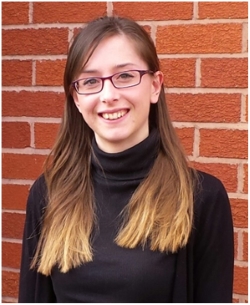
When final nitrogen applications are completed in May, I turn my attention to SOYLseed and help them to prepare for autumn drilling. This includes processing conductivity surveys and creating establishment maps ready to produce variable seed files.
Of all the jobs I do on a day to day basis, the part I enjoy the most is talking to customers and better understanding growth patterns across their farm. This helps me to work out the approach that will help them to use their nitrogen efficiently and achieve target yields. SOYL is a really exciting company to work for and as demand for higher yields increases, it will become even more prevalent and relevant in everyday farming. I look forward to being part of that."
5. Winter Workshops 2014-15
Thank you to all those that attended and contributed to this season’s SOYL winter workshops. Over 1300 people attended 19 workshops across the country to hear the latest precision crop production information, join in debates and learn practical ideas to apply to their business. We look forward to seeing you all again during the growing season.
Don’t forget you can follow us on Twitter @SOYLprecision for regular updates on soils, nutrients, machinery and GPS.










